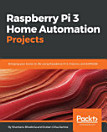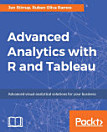Internet of Things Programming with JavaScript
Über dieses E-Book
This book is for developers who are interested in learning how to communicate with connected devices in JavaScript to set up an IoT system. Some basic knowledge of JavaScript is expected. Hobbyists who want to explore the potential of IoT in JavaScript will also find this book useful.
What You Will LearnDevelop the skills to connected devices prepared the field to interact with the devices in a network system Internet of ThingsFind out how to connect sensors and actuators to the devicesSend data to a web server connected devicesUnderstand Internet of things using web services and databaseConfigure a dashboard using HTML5 and JavaScriptControl devices connected from a dashboardMonitor different devices from the dashboardBuild an app for a smartphone to control different devicesIn DetailThe Internet of Things (IoT) is an entirely new platform for developers and engineers, but one thing that remains consistent as we move into this new world, are the programming languages. JavaScript is the most widely used language over the Internet, and with IoT gaining momentum, you will learn how to harness the power of JavaScript to interact with connected devices. This book will teach you how to interact with endpoint devices by developing web services in JavaScript and also set up an interface to control all connected devices.
This book begins with setting up a centralized web server that serves as a hub for all connected devices. The book then progresses further towards building web services to facilitate high-level communication between connected devices. Using Arduino and Raspberry Pi Zero as endpoint devices, the book will show you how devices can communicate with each other, perform a wide range of tasks, and also be controlled from a centralized location using JavaScript. The book ends with creating a hybrid app to control the devices that can be run from a browser or installed on a smartphone.
Style and approachThis book offers step-by-step guidance on how to set up a distributed IoT system using JavaScript.
It will teach you how to interact with endpoint devices by developing web services in JavaScript and also set up an interface for controlling all connected devices.
Bewertungen und Rezensionen
- Als unangemessen melden
Autoren-Profil
Ruben Oliva Ramos is a computer systems engineer, with a master's degree in computer and electronic systems engineering, teleinformatics and networking specialization from University of Salle Bajio in Leon, Guanajuato Mexico. He has more than five years of experience in: developing web applications to control and monitor devices connected with Arduino and Raspberry Pi using web frameworks and cloud services to build Internet of Things applications. He is a mechatronics teacher at University of Salle Bajio and teaches students on the master's degree in Design and Engineering of Mechatronics Systems. He also works at Centro de Bachillerato Tecnologico Industrial 225 in Leon, Guanajuato Mexico, teaching the following: electronics, robotics and control, automation, and microcontrollers at Mechatronics Technician Career. He has worked on consultant and developer projects in areas such as monitoring systems and datalogger data using technologies such as Android, iOS, Windows Phone, Visual Studio.NET, HTML5, PHP, CSS, Ajax, JavaScript, Angular, ASP.NET databases (SQlite, mongoDB, and MySQL), and web servers (Node.js and IIS). Ruben has done hardware programming on Arduino, Raspberry Pi, Ethernet Shield, GPS and GSM/GPRS, ESP8266, and control and monitor systems for data acquisition and programming.





